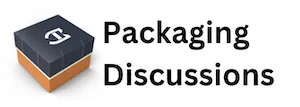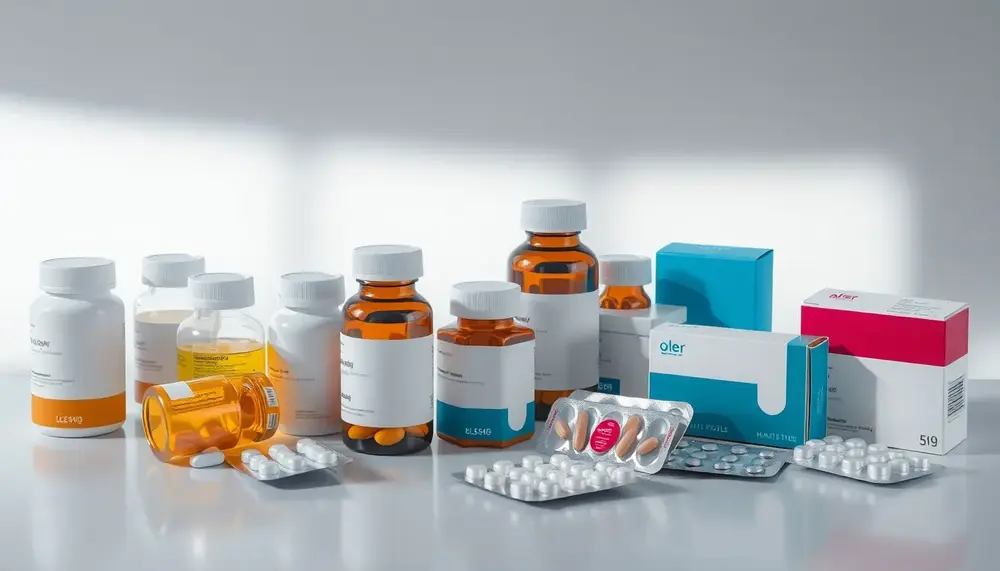Table of Contents:
Introduction: Value of PDF Resources in Pharmaceutical Packaging and Design
PDF resources have become a linchpin for professionals navigating the complex landscape of pharmaceutical packaging and design. These documents are not just static repositories of information—they are living, evolving guides that bridge regulatory requirements, technical know-how, and creative innovation. Unlike traditional textbooks or scattered online articles, a well-curated pharmaceutical packaging PDF delivers targeted, up-to-date insights that are instantly accessible and easy to reference during critical project phases.
What sets these PDF resources apart is their ability to distill intricate topics—such as barrier material selection, user-centric design, and serialization—into actionable frameworks. Many organizations now use interactive PDF formats, embedding clickable diagrams, checklists, and even regulatory links, which can be a game-changer for cross-functional teams working under tight deadlines. The best pharmaceutical packaging and design PDFs also integrate global perspectives, reflecting both local compliance nuances and international harmonization trends.
For researchers and designers, the value lies in the practical application: PDF resources often include side-by-side comparisons, material performance data, and annotated case studies. This enables rapid benchmarking and fosters a culture of evidence-based decision-making. In a field where mistakes can have serious consequences, the reliability and clarity of a pharmaceutical packaging PDF can make all the difference—saving time, reducing risk, and unlocking creative solutions that might otherwise be buried in dense regulatory texts or siloed institutional knowledge.
Key Elements Addressed in Pharmaceutical Packaging PDF Documents
Pharmaceutical packaging PDF documents zero in on the most pressing and technical facets of packaging development, often going far beyond surface-level summaries. These resources dissect each stage of the packaging process, making them indispensable for specialists who need quick, reliable answers. Let’s break down the core elements you’ll typically encounter:
- Material Performance Metrics: Detailed tables and charts highlight barrier properties, compatibility with drug formulations, and resistance to environmental stressors. This data is crucial for selecting the right material for each pharmaceutical product.
- Design Specifications: PDFs frequently provide dimensioned drawings, closure system diagrams, and ergonomic considerations. These specifics support the creation of packaging that is both safe and user-friendly.
- Labeling and Traceability Requirements: Clear guidance on serialization, anti-counterfeiting features, and region-specific labeling standards ensures that packaging meets legal and safety obligations worldwide.
- Testing Protocols: Step-by-step outlines of mechanical, chemical, and microbiological testing procedures help teams validate packaging integrity before products reach the market.
- Sustainability Benchmarks: Many documents now include lifecycle analyses, recyclability indices, and guidance on reducing environmental impact, reflecting the industry’s growing focus on eco-friendly solutions.
- Workflow Checklists: Actionable checklists for documentation, regulatory submission, and cross-departmental collaboration are often embedded, streamlining project management from concept to launch.
By covering these targeted elements, pharmaceutical packaging PDF documents empower professionals to make informed, compliant, and innovative decisions—without wading through irrelevant or outdated information.
Pros and Cons of Using PDF Resources in Pharmaceutical Packaging and Design
| Aspect | Pros | Cons |
|---|---|---|
| Accessibility | Instant digital access; easy to share and reference among teams. | Requires electronic devices and sometimes specific software. |
| Content Quality | Often curated by experts; up-to-date and targeted insights. | Quality varies; risk of outdated or incomplete sources. |
| Searchability | Searchable text allows quick information retrieval. | Non-searchable scanned PDFs can hinder usability. |
| Functionality | Clickable diagrams, checklists, and embedded regulatory links enhance interaction. | Some PDFs lack interactivity or do not support annotations. |
| Compliance Support | Breaks down complex regulations into actionable steps; includes risk assessment templates and submission-ready language. | May not always cover the latest regulatory changes if not updated frequently. |
| Workflow Efficiency | Centralizes protocols, templates, and training materials for streamlined processes. | Version control issues can arise if updates are not managed. |
| Sustainability & Trends | Spotlight on new materials, sustainable solutions, and market trends. | Emerging trends may be overlooked if not included or periodically revised. |
Comparative Analysis: Pharmaceutical Packaging Materials in PDF Guides
PDF guides dedicated to pharmaceutical packaging materials frequently provide a nuanced comparative analysis that goes well beyond generic material lists. These documents often juxtapose traditional and emerging materials, enabling users to weigh the pros and cons for specific pharmaceutical applications. What’s especially useful is the way these guides contextualize material selection within the framework of drug stability, patient safety, and supply chain logistics.
- Glass vs. Polymer: PDF guides dissect the trade-offs between glass and advanced polymers, such as cyclic olefin copolymers. Glass, praised for its inertness, is contrasted with polymers that offer lighter weight and greater design flexibility. Some guides even highlight niche applications, like prefilled syringes, where polymer breakthroughs are shifting industry standards.
- Metals and Barrier Laminates: These materials are evaluated for their superior moisture and oxygen barrier properties. PDF analyses often present side-by-side data on shelf-life extension and compatibility with aggressive formulations, giving packaging engineers a clear decision matrix.
- Paper-Based Innovations: There’s growing coverage of fiber-based packaging solutions in PDF guides, especially for secondary and tertiary packaging. These analyses focus on recyclability, printability, and cost-efficiency, often with case studies from real-world pharmaceutical launches.
- Hybrid and Smart Materials: Some guides are now spotlighting hybrid structures—think multilayer films with embedded sensors or RFID technology. These sections address how such innovations can enhance product security and enable real-time tracking throughout the distribution chain.
By offering this level of comparative depth, pharmaceutical packaging materials PDF guides equip decision-makers with the evidence and context needed to select the optimal material for each unique product scenario—no guesswork, just actionable insights.
PDF Spotlight: Case Study on Innovative Pharmaceutical Packaging Design
One standout case study featured in a leading pharmaceutical packaging PDF details the development of a child-resistant, senior-friendly blister pack for a novel oral medication. The design team faced a classic dilemma: how to balance stringent safety requirements with ease of use for elderly patients who often struggle with dexterity.
The solution? A dual-action push-and-slide mechanism integrated directly into the blister’s backing. This innovation required no additional tools or excessive force, yet passed all regulatory child-resistance tests. Notably, the PDF case study highlights how the team used rapid prototyping and real-world patient feedback loops to refine the design in just three iterative cycles.
- User-Centered Testing: The project included live usability trials with both seniors and caregivers, revealing subtle issues—like color contrast and tactile cues—that would have otherwise gone unnoticed.
- Material Engineering: Engineers selected a novel laminate that provided both puncture resistance and recyclability, meeting sustainability targets without compromising protection.
- Regulatory Collaboration: Early and ongoing dialogue with health authorities streamlined the approval process, as documented in the PDF’s timeline chart.
This case study, as presented in the PDF, demonstrates how multidisciplinary collaboration and iterative design can yield packaging that is both compliant and genuinely user-friendly. It’s a blueprint for innovation that other teams can adapt, especially when faced with competing requirements and tight project timelines.
Utilizing Pharmaceutical Packaging Materials PDF Notes for Regulatory Compliance
Pharmaceutical packaging materials PDF notes are a lifeline when it comes to navigating the labyrinth of regulatory compliance. These notes typically break down complex legislative language into practical, step-by-step guidance, so teams can actually implement what’s required—rather than just reading about it. The best notes are not just checklists; they provide context, examples, and highlight common pitfalls that can trip up even seasoned professionals.
- Documented Change Control: PDF notes often outline the precise documentation needed when switching materials or suppliers, helping avoid regulatory setbacks during audits or inspections.
- Cross-Referencing Standards: They map out how different global standards—like USP, EP, and ISO—intersect, making it easier to harmonize packaging specs for international submissions.
- Risk Assessment Templates: Many notes include ready-to-use templates for material risk assessments, which are essential for demonstrating due diligence to regulators.
- Real-World Scenarios: Practical case snippets illustrate how minor deviations in packaging material specs have led to recalls or compliance warnings, underscoring the stakes involved.
- Submission-Ready Language: Some PDF notes even provide sample text for regulatory filings, ensuring clarity and consistency in dossiers submitted to agencies.
By leveraging these focused PDF notes, teams can proactively address compliance hurdles, minimize the risk of regulatory surprises, and accelerate time-to-market for new pharmaceutical products. It’s not just about ticking boxes—it’s about embedding compliance into every packaging decision from the outset.
Efficiency Boost: How PDF Downloads Streamline Pharma Packaging Workflows
PDF downloads have become a silent engine behind the acceleration of pharma packaging workflows. Instead of chasing scattered resources or waiting for printed manuals, teams can instantly access standardized protocols, technical drawings, and validated templates—all in one digital bundle. This on-demand availability eliminates bottlenecks, especially during fast-paced product launches or packaging updates.
- Centralized Reference: Teams can maintain a single, always-up-to-date PDF repository, reducing confusion over version control and ensuring everyone works from the latest guidance.
- Task Automation: Many PDFs now include embedded forms and checklists, allowing for direct digital input and auto-population of routine documentation. That means less manual data entry and fewer errors.
- Cross-Functional Alignment: Downloadable PDFs make it easy to share packaging specs, change notifications, and compliance updates across departments—no more information silos or miscommunication between R&D, quality, and production.
- Rapid Training: New staff or external partners can be onboarded quickly using curated PDF training modules, which blend visuals, stepwise instructions, and regulatory context in a format that’s easy to digest and revisit.
By integrating PDF downloads into daily routines, pharma packaging teams gain speed, consistency, and agility—qualities that are vital when every minute counts and regulatory precision is non-negotiable.
Securing High-Quality Pharmaceutical Packaging PDF Free Downloads
Finding reliable, high-quality pharmaceutical packaging PDF free downloads can be a bit of a minefield—there’s a lot of outdated or incomplete material floating around. To ensure you’re accessing trustworthy resources, focus on sources that are transparent about their authorship, update frequency, and technical validation. University repositories, peer-reviewed journals, and regulatory agency websites are usually a safe bet.
- Check for Authorship and Credentials: Prioritize PDFs authored by recognized experts or institutions. Look for clear author names, affiliations, and contact details—anonymous files are rarely reliable.
- Version and Date Stamps: High-quality downloads always display a recent publication date and version history. This helps you avoid relying on obsolete data or superseded standards.
- Technical Depth and Referencing: The best PDFs include citations, reference lists, and links to supporting documents. This not only boosts credibility but also lets you dig deeper if needed.
- Direct Access, No Gimmicks: Avoid sites that require unnecessary sign-ups or that bundle PDFs with unrelated content. Legitimate sources offer direct, unencumbered downloads.
- Compliance with Accessibility Standards: Quality PDFs are formatted for screen readers and include searchable text, making them usable for everyone on your team.
By following these criteria, you can secure pharmaceutical packaging PDF free downloads that genuinely support your work—saving time, reducing risk, and keeping your projects on the right track.
Conclusion: Leveraging PDF Insights for Advanced Packaging and Design Solutions
Conclusion: Leveraging PDF Insights for Advanced Packaging and Design Solutions
Harnessing insights from specialized pharmaceutical packaging PDFs opens up avenues for smarter, faster innovation. These documents don’t just inform—they actively drive strategic thinking by presenting emerging technologies, such as nanomaterial coatings and digital authentication features, in a practical context. With access to expert analyses and real-world application data, teams can confidently pilot new packaging concepts that anticipate future regulatory and market shifts.
- Trend Anticipation: PDF insights often spotlight upcoming industry trends—like biodegradable polymers or connected packaging—allowing early adopters to gain a competitive edge.
- Collaborative Advantage: Sharing annotated PDFs across multidisciplinary teams fosters creative brainstorming and solution co-development, breaking down traditional silos.
- Continuous Improvement: Leveraging iterative feedback captured in PDF-based case reviews supports ongoing optimization, not just one-off fixes.
Ultimately, integrating these advanced PDF insights into your workflow doesn’t just solve today’s packaging challenges—it sets the stage for tomorrow’s breakthroughs in pharmaceutical design and safety.
FAQ on Pharmaceutical Packaging & Design PDF Resources
What are the key benefits of using PDF guides for pharmaceutical packaging and design?
PDF guides provide centralized, up-to-date, and easily accessible insights into material selection, design specifications, compliance, and technical protocols. Their searchable format and embedded features support collaboration, rapid reference, and intensive workflow efficiency for cross-functional teams.
How do PDF resources support regulatory compliance in pharmaceutical packaging?
Quality PDF resources break down complex regulatory language into practical steps, provide harmonization between global standards, and often include risk assessment templates and submission-ready language to help teams ensure full compliance with international regulations.
What types of material comparisons can be found in pharmaceutical packaging PDF documents?
Pharmaceutical packaging PDF guides frequently feature comparative analyses of materials such as glass, polymers, metals, hybrid composites, and paper-based solutions. They offer performance data, application suitability, and case study insights to support evidence-based material selection.
How can pharmaceutical packaging PDF downloads optimize workflow and training?
Downloadable PDFs consolidate critical resources such as templates, technical drawings, and checklists into a single, version-controlled digital repository. This accelerates onboarding, streamlines process alignment between departments, and facilitates quick, consistent updates for ongoing projects and training.
What are the best practices for finding high-quality pharmaceutical packaging PDF free downloads?
Focus on PDFs from trusted sources such as universities, regulatory agencies, and peer-reviewed journals. Look for documents with clear authorship, recent publication dates, technical references, direct download links, and accessibility features like searchable, well-structured text.






